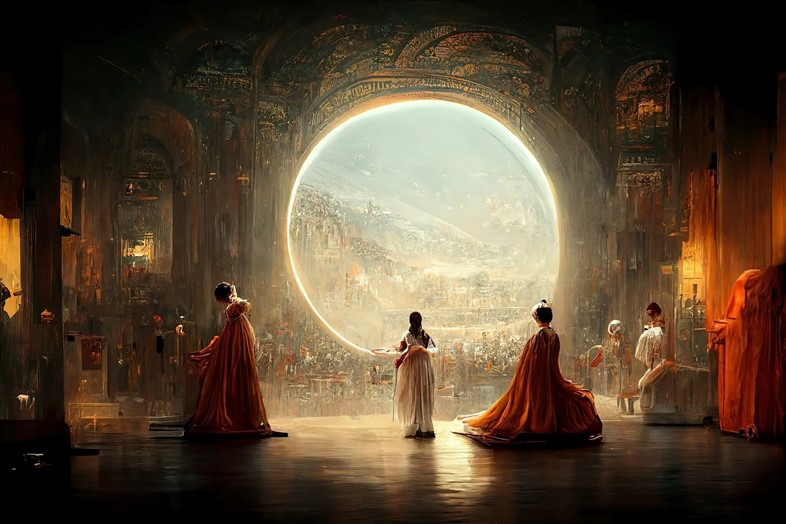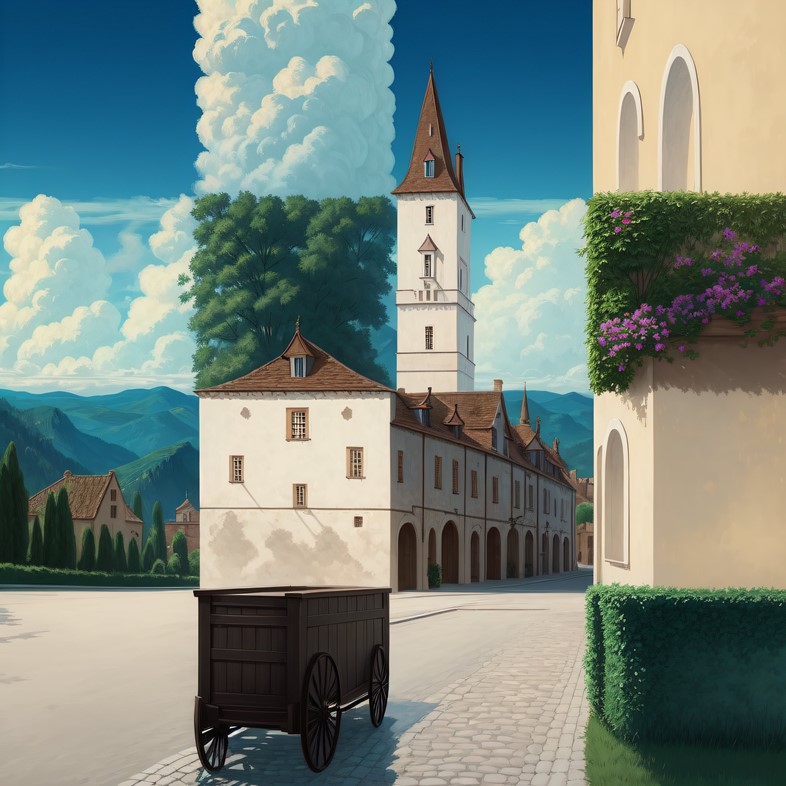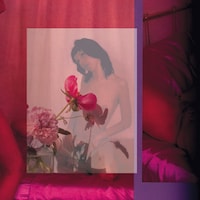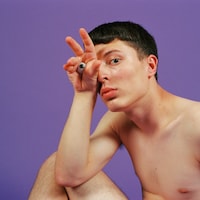From art, to music, to the Hollywood writers’ strike, AI is shaking up our understanding of creativity – how will we decide if, or when, to give it the credit it deserves?
In 2022, an artist named Jason Allen took home a first-place prize at the Colorado state fair’s annual art competition. Titled Théâtre d’Opéra Spatial, his winning artwork depicted an otherworldly stage populated by figures in flowing robes, with a swirling portal opening out onto what looks like a glittering cityscape. Entered into a division for “digital art/digitally manipulated photography”, it netted $300. The problem? It was created via the generative AI programme Midjourney. At the time, Allen claimed that this wasn’t accounted for in the competition’s guidelines. “I’m not going to apologise for it,” he told the New York Times. “I won, and I didn’t break any rules.” Now, though, the artwork has faced a setback.
According to the US Copyright Office Review Board, Théâtre d’Opéra Spatial cannot be copyrighted due to its AI origins. “If all of a work’s ‘traditional elements of authorship’ were produced by a machine, the work lacks human authorship, and the office will not register it,” the board says. This decision comes despite Allen’s authorship claim, based on the fact that he “entered a series of prompts, adjusted the scene, selected portions to focus on, and dictated the tone of the image”, all with the intent to make a statement on the use of AI in art.
Allen isn’t the only AI-assisted artist to bump up against the limits of copyright law in the last year, of course, with courts increasingly called upon to redraw the definition of human authorship and originality in a fast-changing creative landscape. Just last month, computer scientist Stephen Thaler was also shot down by a US judge in a long-running legal battle to grant authorship of an artwork to his AI system Creativity Machine, on the basis that it was “autonomously created by a computer algorithm running on a machine”. While the law is “designed to adapt with the times,” the judge said in the most recent ruling, “human creativity is the sine qua non at the core of copyrightability.”
It’s not only visual artists contending with these issues. AI has hit musicians particularly hard, and they’ve largely fallen into two camps: those who embrace and experiment with the tech as a new, cutting-edge tool (see: Grimes, Sevdaliza, Arca, and Holly Herndon) and those who oppose it (Drake, Nick Cave, Noel Gallagher), who call on streaming services to block its use. The lines are particularly blurry here, as many have noted, because machine-learning tools have been part of many musicians’ workflows since long before the recent generative AI hype – on the other hand, the rise of AI-generated muzak and audio deepfakes paint a bleak picture of the industry’s future, especially for young, emerging musicians.

Then, there’s the question of literal authorship, which recently saw writers like George RR Martin and Jonathan Franzen launch a lawsuit against OpenAI for “systematic theft on a mass scale”, following allegations that the company scraped their copyrighted works to train its models, effectively giving it the power to spawn an endless array of new, virtual authors that can imitate or build on their work.
Questions of AI authorship – and the threat it poses to human artists – have played a large role in the Hollywood screenwriters’ strike, too, with a section of the recent agreement between unions and studios dedicated to generative artificial intelligence. “The companies agree that because neither traditional AI nor GAI is a person, neither is a ‘writer’ or ‘professional writer’,” reads the agreement. “Therefore, written material produced by traditional AI or GAI shall not be considered literary material.” At least for now.
Another AI-generated artwork has been floating around on the internet in recent weeks, this one generated with the help of a neural network model called ControlNet, which allows users greater input when generating art with the text-to-image model Stable Diffusion. It depicts an idyllic, old-timey village scene with clouds, houses, trees, and figures that are organised into a near-seamless spiral of light and shade. It’s still not perfect, of course: the figures are sketchy and critics have pointed out an inhuman logic to the shadows and architecture. For many, however, this image represents a kind of tipping point. “This was the point where AI-generated art passed the Turing test for me,” reads a quote tweet from a prominent computer scientist. A comment from AI communicator Liv Boeree reads: “Oh man that’s AI-generated? I wish this ride had some brakes.”
This was the point where AI-generated art passed the Turing Test for me. https://t.co/IOcJH1TwJ2
— Paul Graham (@paulg) September 11, 2023
Maybe you’re not so easily fooled by a pretty landscape generated around a spiral template, but it’s becoming very clear that, sometime in the near future, something will come along that can fool you too. Fidelity isn’t even the most surprising part of the artwork, though. For many, the most shocking aspect of Spiral Town – alongside other, concurrent artworks in the same vein – is its novelty: while it might bear traces of MC Escher or surrealists like de Chirico, many agree that they haven’t seen this kind of art before. “It’s creative, novel, and endless.” The old arguments, that AI can’t create anything original, only derivative artworks that rehash human art, are melting away just as fast.
This creates some obvious problems for copyright offices, movie studios, streaming platforms, or anyone else who’s tasked with pinning down the definition of creative authorship as AI art, film, and music etc. continue to improve and proliferate. Arguments based on “originality”, or the artist’s own skill and labour – AKA the key requirements for copyright protection here in the UK – just don’t really work anymore, or won’t in the near future.
Ultimately, perhaps, the question of true authorship will boil down to if (or when) we ascribe agency to “intelligent” machines, which itself is tied up with the tricky question of what we mean by concepts like consciousness, creativity, originality, free will, or “soul”. Unfortunately, these are issues we’ve been grappling with for centuries, and we still basically don’t have a clue.




